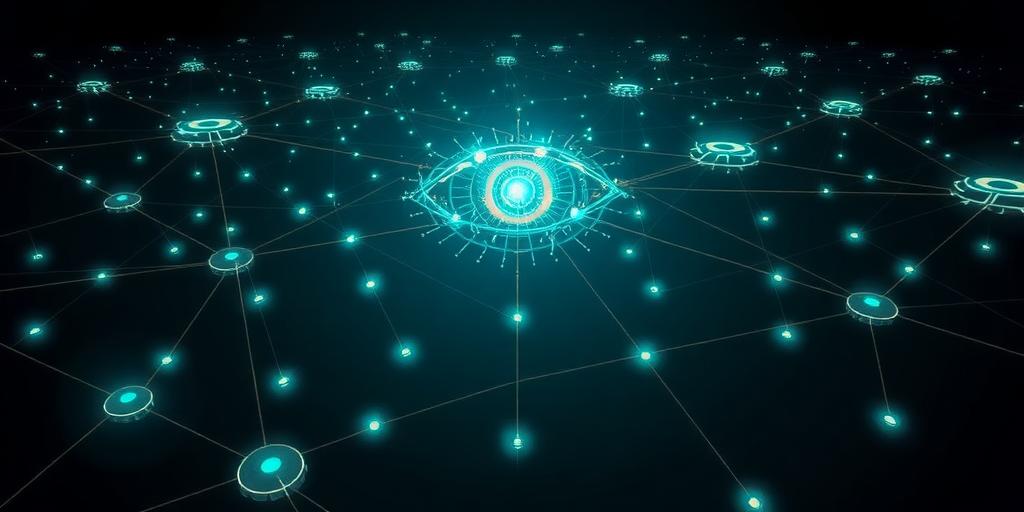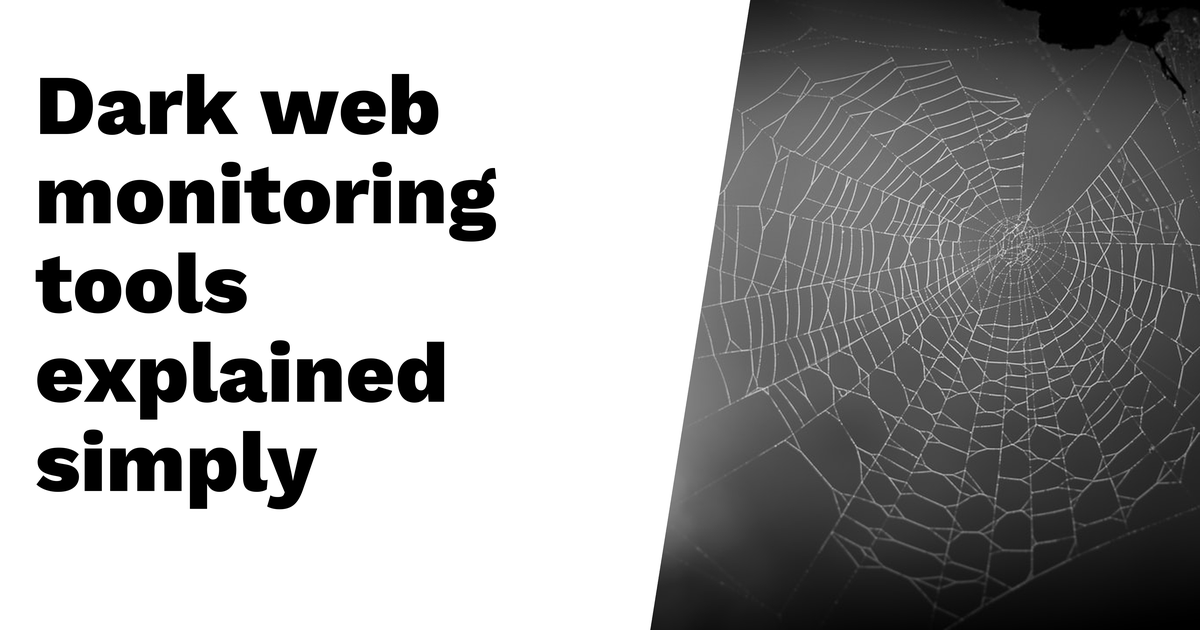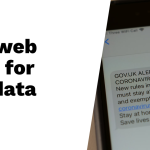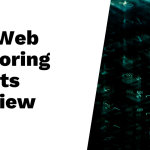Dark web monitoring tools are cybersecurity solutions that look for stolen or leaked sensitive information on the dark web. They work like search engines but target hidden areas of the internet where illegal activities happen. The main purpose is to detect compromised data, such as passwords and personal details, before cybercriminals can misuse them. These tools continuously scan various dark web sources and send real-time alerts when they find relevant matches. Organizations benefit from early threat detection, which helps protect sensitive information and supports compliance with regulations like GDPR. Overall, these tools are crucial for businesses dealing with customer data.
Table of Contents
- What Are Dark Web Monitoring Tools?
- Purpose of Dark Web Monitoring Tools
- How Do Dark Web Monitoring Tools Work?
- Key Features of Dark Web Monitoring Tools
- Benefits of Using Dark Web Monitoring Tools
- Common Threats Found on the Dark Web
- Limitations of Dark Web Monitoring Tools
- Who Needs Dark Web Monitoring?
- Recommendations for Users
- Understanding the Dark Web
- Frequently Asked Questions
1. What Are Dark Web Monitoring Tools?
Dark web monitoring tools are specialized cybersecurity solutions aimed at scanning the dark web for sensitive information that has been stolen or leaked. Unlike traditional search engines, these tools navigate the hidden parts of the internet where illicit activities often take place. Their primary purpose is to identify compromised data, such as passwords and personal information, before malicious actors can exploit it.
These tools work by continuously monitoring various dark web sources, including forums and marketplaces, for any signs of sensitive information related to individuals or organizations. When a match is found, users receive real-time alerts, allowing for swift action to mitigate potential damage.
Dark web monitoring tools utilize advanced technology, including automated data crawlers and machine learning algorithms, to scan vast amounts of information quickly and accurately. They offer comprehensive coverage of dark web sources, ensuring that users stay informed about potential threats.
Typically, these tools operate on a subscription basis, providing ongoing monitoring services that can be tailored to specific needs. They are essential for proactive cybersecurity efforts, as they help both individuals and businesses safeguard their data against emerging cyber threats.
2. Purpose of Dark Web Monitoring Tools
The main purpose of dark web monitoring tools is to protect sensitive information from being exploited. They aim to detect compromised credentials before they are used for malicious activities, which is crucial for preventing identity theft and fraud. By identifying if personal or corporate data is being traded or sold on the dark web, these tools help organizations respond quickly to data leaks and breaches. This proactive approach minimizes the damage from potential cyber threats, offering peace of mind to users by continuously monitoring the dark web. Additionally, the data gathered can assist organizations in improving their security posture and prioritizing their cybersecurity efforts. In essence, dark web monitoring tools serve as an early warning system that helps businesses understand the landscape of cybercrime relevant to their industry.
3. How Do Dark Web Monitoring Tools Work?

Dark web monitoring tools operate by using automated crawlers that explore dark web sites for sensitive information. These crawlers sift through forums, marketplaces, and paste sites where stolen data is often shared. To enhance their effectiveness, many tools utilize machine learning algorithms, which help in identifying patterns and detecting anomalies within the vast amounts of data.
When these tools find compromised data, they send real-time alerts to users, allowing them to respond swiftly to potential threats. This immediate notification system is crucial in mitigating risks before cybercriminals can exploit the information. Additionally, the tools often log and categorize their findings, making it easier for users to manage and report on the data that has been detected.
Users can customize the monitoring process based on their specific needs, such as focusing on particular types of data, including email addresses or credit card information. Some advanced tools even establish networks of informants or partnerships to gather intelligence from various sources, further improving their detection capabilities.
To ensure accuracy, the scanning process frequently involves cross-referencing data with known breaches, which enhances the chances of identifying compromised information. Many tools also provide dashboards that allow users to visualize monitoring results and alerts, alongside historical data that can track trends over time.
4. Key Features of Dark Web Monitoring Tools
Dark web monitoring tools come equipped with several key features that enhance their effectiveness in safeguarding sensitive information. One of the most important aspects is their comprehensive coverage across various dark web platforms. This ensures that users receive thorough scans of forums, marketplaces, and other hidden corners of the internet where compromised data might be lurking. Additionally, customizable monitoring options allow businesses to focus on specific types of data, such as employee credentials or customer information, tailoring the protection to their unique needs.
Another significant feature is AI-enhanced detection, which improves the speed of identifying potential threats while reducing the occurrence of false positives. This makes it easier for organizations to focus their attention on genuine risks. Real-time notifications are also crucial, as they keep users informed immediately when sensitive information is detected, allowing for swift action to mitigate any potential damage.
User-friendly dashboards present monitoring results in a clear and concise manner, enabling quick interpretation of data. Moreover, some tools offer data remediation services, assisting users in recovering compromised information, which can be vital in minimizing the fallout from a breach. Alerts can be tailored based on user preferences for urgency and type of data, ensuring that organizations only receive the information that is most relevant to them.
Integration capabilities with existing security systems further enhance overall cybersecurity by creating a more cohesive defense strategy. Reporting features allow organizations to analyze trends and incidents over time, providing insights that can inform future security measures. Lastly, support services are often available to assist users in understanding their findings, which can be especially helpful for those new to dark web monitoring.
| Feature | Description |
|---|---|
| Comprehensive Coverage | Scans a wide array of dark web sources, including forums, marketplaces, and pastes. |
| Real-Time Notifications | Immediate alerts when sensitive data is identified. |
| AI-Enhanced Detection | Utilizes artificial intelligence to improve detection speed and accuracy. |
| Customizable Monitoring | Businesses can tailor monitoring based on specific needs, such as focusing on employee credentials or customer data. |
5. Benefits of Using Dark Web Monitoring Tools
Using dark web monitoring tools offers several key benefits that can be crucial for organizations in today’s digital landscape. Early detection of data breaches is perhaps the most significant advantage, as it allows organizations to respond quickly and minimize potential damage. By identifying compromised information before it can be exploited, businesses can protect sensitive customer and corporate data more effectively. This proactive approach not only helps in maintaining data integrity but also supports compliance with data protection regulations like GDPR and HIPAA.
Moreover, these tools enhance rapid response capabilities, which is essential in preventing fraud and identity theft. Organizations can better allocate resources by understanding their risk exposure, ensuring that they focus on the areas that need the most attention. Dark web monitoring tools also provide valuable insights into the cybersecurity landscape, helping businesses stay informed about emerging threats that could affect their operations.
Users of these tools gain awareness of their digital footprint, enabling them to take proactive measures to reduce risk. The enhanced security posture and resilience against cyber threats offered by these monitoring solutions can give peace of mind to executives and stakeholders who are concerned about data security. Additionally, access to expert analysis and support can greatly improve incident response strategies, making organizations more prepared for potential threats.
- Early detection of breaches can significantly reduce potential damage.
- They help maintain the integrity of sensitive customer and corporate data.
- Compliance with data protection regulations can be monitored and managed more effectively.
- Rapid response capabilities help prevent fraud and identity theft.
- Organizations can better allocate resources by understanding their risk exposure.
- They provide valuable insights into the cybersecurity landscape relevant to businesses.
- Users can gain awareness of their digital footprint and take action to minimize risk.
- The tools can enhance overall security posture and resilience against cyber threats.
- They may offer peace of mind for executives and stakeholders concerned about data security.
- Access to expert analysis and support can improve incident response strategies.
6. Common Threats Found on the Dark Web
The dark web is a haven for various illicit activities, where stolen usernames and passwords are frequently up for sale. Cybercriminals often buy and sell credit card information in bulk, making it a significant risk for financial fraud. Businesses are not spared either, as corporate espionage materials can be found, creating potential threats to their operations and trade secrets. Additionally, malware and hacking tools are traded among users, which can lead to serious breaches. Personal information is another common target, with identity theft being a major concern for individuals. Phishing kits and techniques are often shared, helping attackers refine their methods for future exploits. Data breaches from major companies can also result in sensitive information being sold on these dark web marketplaces. Furthermore, discussions surrounding fraudulent transaction methods and various hacking services pose ongoing threats to organizations, complicating the cybersecurity landscape.
7. Limitations of Dark Web Monitoring Tools
Dark web monitoring tools come with several limitations that users should be aware of. Firstly, these tools are not designed to prevent data breaches; their primary function is to detect and respond to threats after they arise. Some monitoring tools may not cover all dark web sources, which creates gaps in their monitoring capabilities. As a result, organizations could miss critical information about compromised data. Additionally, automated systems used in these tools can generate false positives, leading to unnecessary alerts that may cause confusion or panic among users.
Furthermore, the lack of contextual information can impact the accuracy of threat assessments, making it difficult to determine the severity of a potential issue. The quality of monitoring itself can vary widely among different tools and providers, meaning that not all solutions are equally effective. Cost can also be a barrier, particularly for smaller organizations that might struggle to implement these monitoring systems.
In practice, users must take further action based on the alerts received, as the tools do not offer remediation solutions. Moreover, some dark web activities may go unreported, limiting visibility into certain threats. There’s also the possibility of delays in reporting, as data analysis can take time. Finally, users may misunderstand alerts, which could lead to misallocation of resources or an inappropriate response to perceived threats.
8. Who Needs Dark Web Monitoring?
Dark web monitoring is essential for various groups and organizations. Businesses that handle sensitive customer data, like e-commerce sites or tech companies, should prioritize monitoring solutions to protect their clients. Financial institutions, such as banks and credit unions, are prime targets for cybercriminals, making robust monitoring vital to safeguard customer accounts and financial transactions. Healthcare providers that store personal health information, including hospitals and clinics, must also protect against breaches that could expose sensitive patient data.
Organizations with a high public profile, like popular brands or celebrities, may attract unwanted attention from hackers, necessitating proactive monitoring. Any company that has experienced a data breach in the past is at an increased risk and should implement monitoring to detect further threats early. Individuals concerned about identity theft can benefit from personal monitoring tools, which help track the use of their information online.
Nonprofits and charitable organizations that deal with donations and personal information may also be at risk and should consider monitoring solutions to protect their supporters. Companies in regulated industries, like finance and healthcare, must comply with laws regarding data protection, making dark web monitoring a necessary part of their compliance strategy. Consultants and freelancers who handle sensitive client information should monitor their data to ensure it remains secure. Lastly, educational institutions that store student and staff information can also benefit from monitoring, as they often hold large amounts of personal data that could be targeted by cybercriminals.
9. Recommendations for Users
To enhance your online security, start by using strong and unique passwords for different accounts. This makes it harder for cybercriminals to access multiple accounts if one password is compromised. Additionally, enable two-factor authentication wherever possible, as this adds an extra layer of protection by requiring a second form of verification. It’s also wise to regularly check your personal information with dark web monitoring tools, as they can alert you to any potential breaches. If you find outdated or irrelevant personal information online, consider using data removal services to clean up your digital footprint and minimize exposure.
Stay informed about common cyber threats and familiarize yourself with best practices for online security. If you manage a team, take the time to educate employees about the importance of data security and the role of monitoring tools. Review any monitoring alerts promptly, as quick action can prevent further issues. Keep your software and systems up to date to protect against known vulnerabilities, and try to limit the amount of personal information you share online. Finally, consulting with cybersecurity professionals can help you tailor monitoring strategies to meet your specific needs.
10. Understanding the Dark Web
The dark web is a hidden part of the internet that isn’t indexed by traditional search engines like Google. It requires special software, such as Tor, to access it. While many associate the dark web with illegal activities, like the sale of drugs and weapons, it’s important to note that it also serves legitimate purposes, such as privacy advocacy and whistleblowing. This complex environment hosts forums where cybercriminals communicate and share knowledge, as well as discussions about cybersecurity risks and solutions.
Understanding the dark web helps contextualize the various threats organizations face today. For instance, stolen credentials, credit card information, and corporate espionage materials are often traded in dark web marketplaces. By grasping the nature of the dark web, businesses can better develop effective cybersecurity measures to protect their sensitive information. Moreover, many sites on the dark web utilize encryption and anonymity, adding layers of complexity to the tracking and monitoring of illicit activities. This makes dark web monitoring tools crucial for identifying compromised data before it can be exploited.
Frequently Asked Questions
What is the dark web, and how does it relate to monitoring tools?
The dark web is a part of the internet not indexed by search engines. It often has content that illegal activities take place on, and monitoring tools can help track information about your personal data being sold or shared there.
Why should I consider using dark web monitoring tools?
Using dark web monitoring tools helps keep your personal information safe. They can alert you if your information appears on the dark web, allowing you to take action quickly to protect yourself.
How does dark web monitoring work?
Dark web monitoring works by scanning various dark web forums and sites to find compromised data. Tools typically check for your email address, passwords, and other personal details, notifying you if they are found.
Who can benefit from dark web monitoring?
Anyone can benefit from dark web monitoring, especially people concerned about identity theft or those who handle sensitive information, like businesses and organizations, looking to protect their assets.
Is dark web monitoring only for businesses?
No, dark web monitoring is not just for businesses. Individuals can use these tools to secure their personal data and stay informed about potential threats to their identity and privacy.
TL;DR Dark web monitoring tools are cybersecurity solutions designed to scan the dark web for compromised sensitive information. Their primary purpose is to detect leaked data, such as passwords and personal information, to prevent exploitation by cybercriminals. These tools continuously monitor various sources on the dark web, providing real-time alerts when threats are discovered. Key features include comprehensive coverage, AI-enhanced detection, and customizable monitoring options. While they help in early threat detection and protect sensitive information, limitations include the inability to prevent breaches and the potential for false positives. Businesses handling customer data and financial institutions should consider using these tools as part of their cybersecurity strategy.





